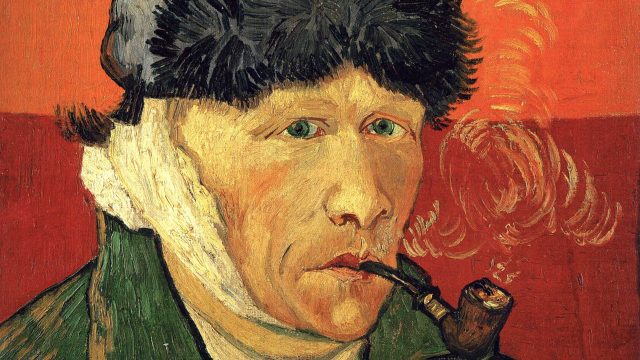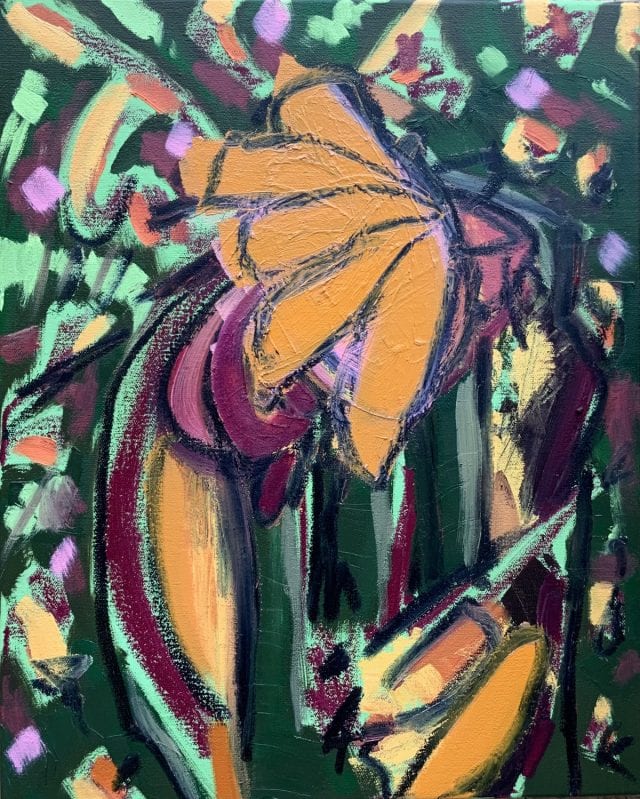Victoria Heath
How to Post Your Artwork Online Without Fear

What you should know before posting your art on social media, your website and online platforms and why you should not fear sharing your artwork.
You created an amazing piece of art. How do you bring it to the people?
You could try the good old direct marketing approach by going from door to door in the neighbourhood of your target audience. Gently knock, greet them with a friendly smile, then showcase the divine piece to thy neighbor. If you’re good in sales, you could convince them not to call the cops right away, and maybe even to allow you to test-drive your piece of art in their living room. Very unlikely, but worked great for vacuum cleaners in the past.
Alternatively, you could try the gorilla marketing by asking everyone that crosses your path on your way to the supermarket or elsewhere to behold and hold your artwork. Ask them how they feel. If they feel good, push a sale. Pick trustworthy, and preferably, less athletic individuals to avoid artwork kidnapping.
What you will most likely do…
Post your newly created artwork on the internet.
The Internet – a place where artists can share their work and ideas, gain local or global exposure, recognition and likes, and have their name and face attached to their work. While the instant recognition in form of likes and comments gives you an incredible adrenaline rush, the thought of someone stealing your work or idea makes you want to hide your work in the darkest room, and only show it to the selected few who willingly made a downpayment to just glance at it.
Posting your artwork online is a trade-off, just like everything else in life: to get, you have to give. Works the same for everyone with no exceptions. And before you start cursing at the big bad corporations like Instagram or Facebook (which are technically family) for blatantly taking advantage of your hard work, remember that these platforms are giving you the opportunity to connect, share, be recognized and get your adrenaline fix.
On the other hand, no social platform can exist without your input. So they do have to listen to you in order to keep the business going, and to ensure that the people behind the scenes get paid for their hard work at the end of each month. Let’s just call it a mutual codependency.
How to enjoy the good, deal the the bad and overcome the evil?
Copyright
Yes, you do own the rights to your creation or intellectual property.
The absolute transformation of everything that we ever thought about music will take place within 10 years, and nothing is going to be able to stop it. I see absolutely no point in pretending that it’s not going to happen. I’m fully confident that copyright, for instance, will no longer exist in 10 years, and authorship and intellectual property is in for such a bashing.
David Bowie – June 9, 2002 – New York Times

Mr. Bowie was wrong about this. Thanks to the likes of Richard Prince, the official appropriator of re-photography, the internet and social media sites were forced to revise their terms and conditions to keep people away from doing the same. But who reads the terms and conditions, right? You don’t have to. It’s common sense. Those who don’t have it, deal with the consequences.
The good news is – not everyone is out to get you. People make mistakes, and are at times unaware that they do so. So if you discover that someone is using the image of your artwork without your consent or attribution, don’t panic or call your lawyer yet. Send them a written notice to inform them of the situation, and kindly ask them to remove the content in question or add your name and/or link as the source.
Image resolution and size
Technically, everything you post online can be copied and saved. If you think that removing the right click option, will stop someone from downloading your content, think again or try developer tools. Those who aren’t technically blessed, can take advantage of the screenshot that captures images in an decent quality.
Don’t make this mistake!
The mistake most artists make while showcasing the artwork on their website is uploading high resolution images trusting some jQuery script magic will protect them from the content pirates. It won’t!
Sharing your artwork online: a really valuable advice for you to remember and apply!
Any photo editing software, whether Photoshop, Affinity Photo or even Mac Preview has an option to adjust images for web. The web optimization of images is highly recommendable for SEO and protects you from the ill-minded, money-hungry content criminals.
Before uploading your image to your website, open the photo editing software of your choice. Click on Save as or Export. Set the image quality to 85%. Then set the desired image size. The image size should not exceed 2500 px (width or height). If you are not using the image as a background, you can even go below 1600 px.
Make your artwork accessible
By allowing people to share your artwork online, you create an additional outlet of exposure. And you want people to see your work, right? Whether it’s an article, retweet or repost – every share gets at least one new pair of eyes to see your makings.
There is only one thing in the world worse than being talked about, and that is not being talked about.
Oscar Wilde
Give your fans, admires and critics the opportunity to promote you. Most people in online art communities offer support and positive encouragement. While most comments are more of a superficial nature, such as “great stuff!”, “amazing”, “love it” that simply boost our ego, other may contain constructive criticism or inspiration that, if done correctly, can encourage your growth and open new perspectives.
Don’t let the fear of copycat and imitation take away your chances of becoming the greatest artist you aim to be.
Photo: Mural Study 4: by John Decker (1895–1947). Original from Smithsonian Institution. Digitally enhanced by rawpixel.




